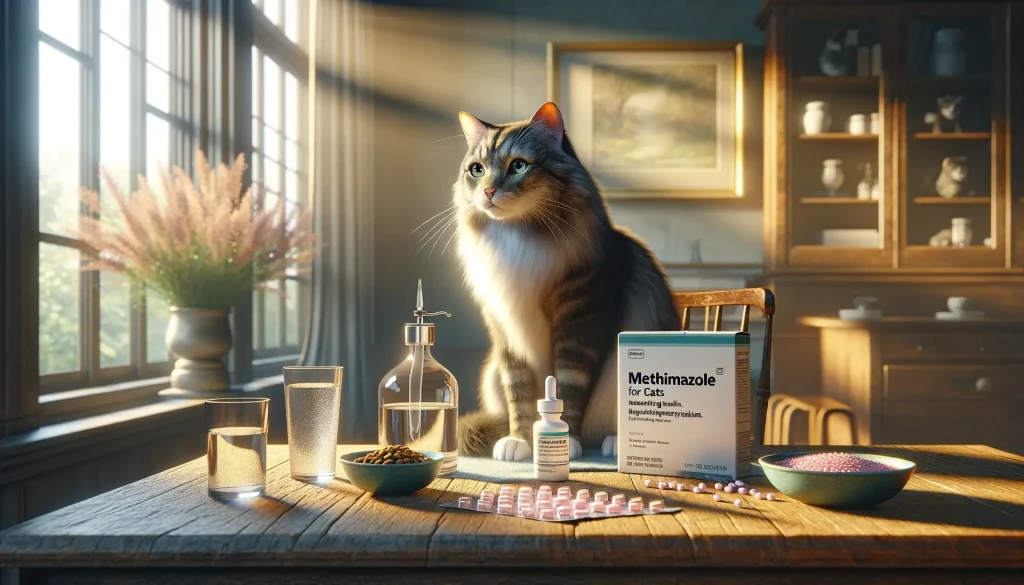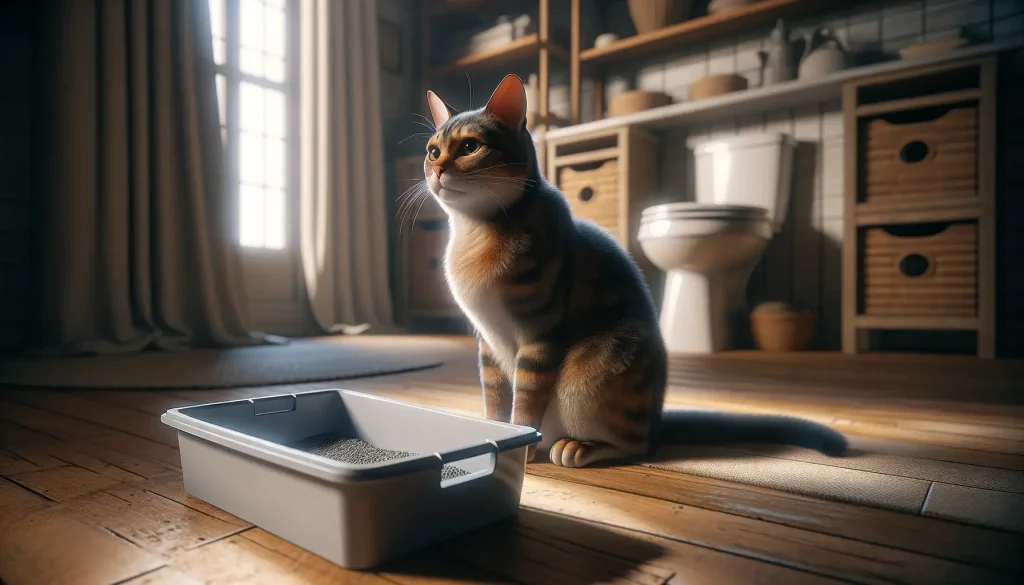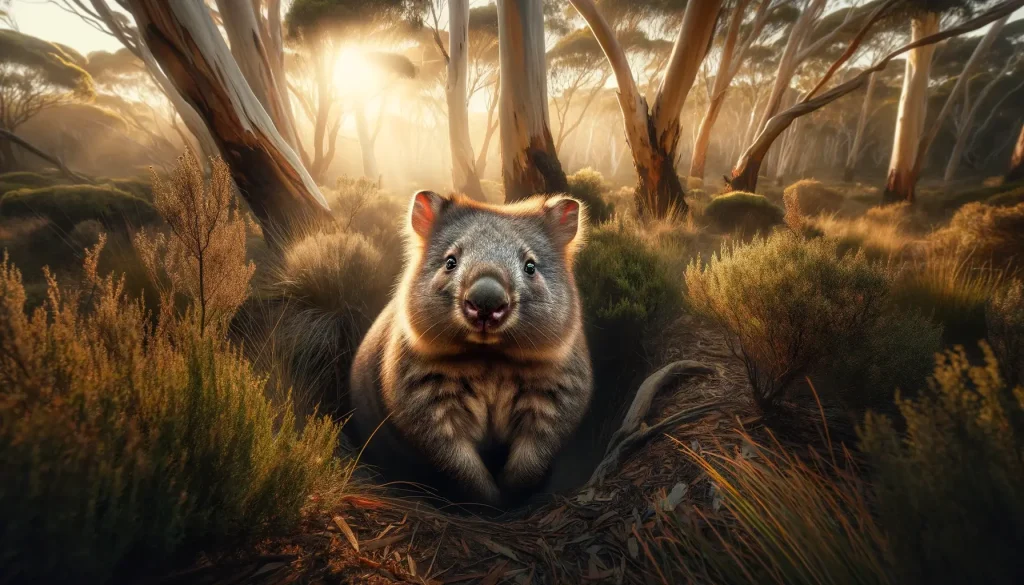
Understanding Your Pet Wombat
Wombats are unique animals native to Australia, belonging to the family Vombatidae. As pet owners interested in these creatures, it’s essential to grasp their natural behaviors and habitats.
Characteristics of Wombats
Wombats are robust, heavily built marsupials with a distinctive appearance. They possess small eyes, short ears, and are almost tailless. An interesting fact about wombats is their size, which can range from 80 to 120 cm (31 to 47 inches) in length, making them quite large for a burrowing animal. They share some resemblance with woodchucks but are notably larger.
Nocturnal and Herbivorous Diet
Primarily nocturnal, wombats are active during the night. Their diet is strictly herbivorous, consisting mostly of grasses. The common wombat (Vombatus ursinus), in particular, also feeds on the inner bark of tree and shrub roots. This dietary preference plays a crucial role in their interaction with human activities, especially in agricultural regions.
Interaction with Human Environments
One challenge with wombats is their tendency to dig in cultivated fields and pastures. Their burrowing behavior, although natural, may lead to conflicts with farmers. Additionally, wombat burrows sometimes provide shelter for rabbits, which are considered pests in many agricultural areas. Understanding this aspect of wombat behavior is crucial for pet owners who live near farms or in rural settings.
Species of Wombats
There are three main species of wombats: the common wombat, and two types of hairy-nosed wombats. The common wombat prefers woodlands and lives along the Dividing Range in southeastern Australia. The hairy-nosed wombats, more sociable in nature, create nests in extensive underground burrows and are recognized by their silky fur and pointed ears.
| Species | Habitat | Characteristics |
|---|---|---|
| Common Wombat (Vombatus ursinus) | Southeastern Australia, Tasmania | Coarse dark hair, bald nose pad |
| Southern Hairy-nosed Wombat (L. latifrons) | Semiarid South Australia | Silky fur, entirely hairy nose |
| Northern Hairy-nosed Wombat (L. barnardi) | Central Queensland | Large size, protected by law |
For potential and current pet owners, it’s vital to recognize that wombats have special needs, particularly in terms of habitat and diet. Their burrowing nature requires space, and their diet needs to mimic their natural herbivorous preferences as closely as possible.
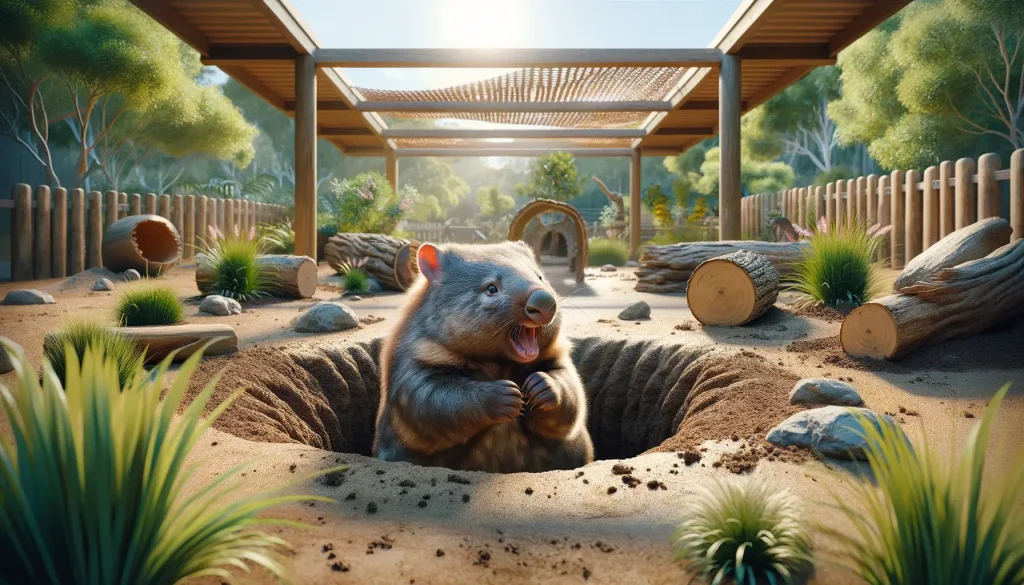
Fun Facts About Your Pet Wombat
Wombats, those cuddly Australian marsupials, are as fascinating as they are adorable. Here are some fun facts to deepen your bond with your pet wombat.
Unique Digestive Process
Wombats have a very slow digestive process. It can take up to 14 days for food to complete its journey through the wombat’s system. This slow digestion helps extract the most nutrients from their herbivorous diet.
Burrowing Champions
Known for their burrowing, wombats dig extensive tunnel systems. The impressive part? Their burrows can be as long as 30 meters (about 100 feet). These burrows offer protection from predators and extreme weather, making wombats skilled landscape engineers.
Square Poop
One of the most quirky facts about wombats is their square-shaped poop. The unique shape helps the poop stay in place and marks the wombat’s territory. The square shape comes from the wombat’s intestines, which shape the poop before it exits.
Vombatidae Family
Wombats are part of the Vombatidae family. This family consists of three large terrestrial species, all native to Australia. Despite their cute appearance, these heavily built marsupials are great burrowers.
Teeth That Never Stop Growing
Wombats have a unique dental feature: continuously growing teeth. This adaptation is perfect for their diet, consisting of tough grasses and roots. The continuous growth compensates for the wear and tear from chewing fibrous plants.
Nose Differences Among Species
The common wombat has a distinct bald nose pad, while the hairy-nosed wombats, as their name suggests, have fur-covered noses. This difference in nose texture is one way to distinguish between the species.
Related to a Giant
Wombats have a prehistoric cousin – the giant wombat (Diprotodon), believed to be the largest marsupial in history. Some giant wombats stood 1.7 meters tall at the shoulder and averaged 3 meters in length, weighing 2,000–2,500 kg.
Social Life of Hairy-Nosed Wombats
While the common wombat might be more solitary, the southern hairy-nosed wombat prefers company. They make communal nests at the end of their large burrows, which they share with several wombats. This sociable behavior contrasts with the common wombats’ solitary nature.
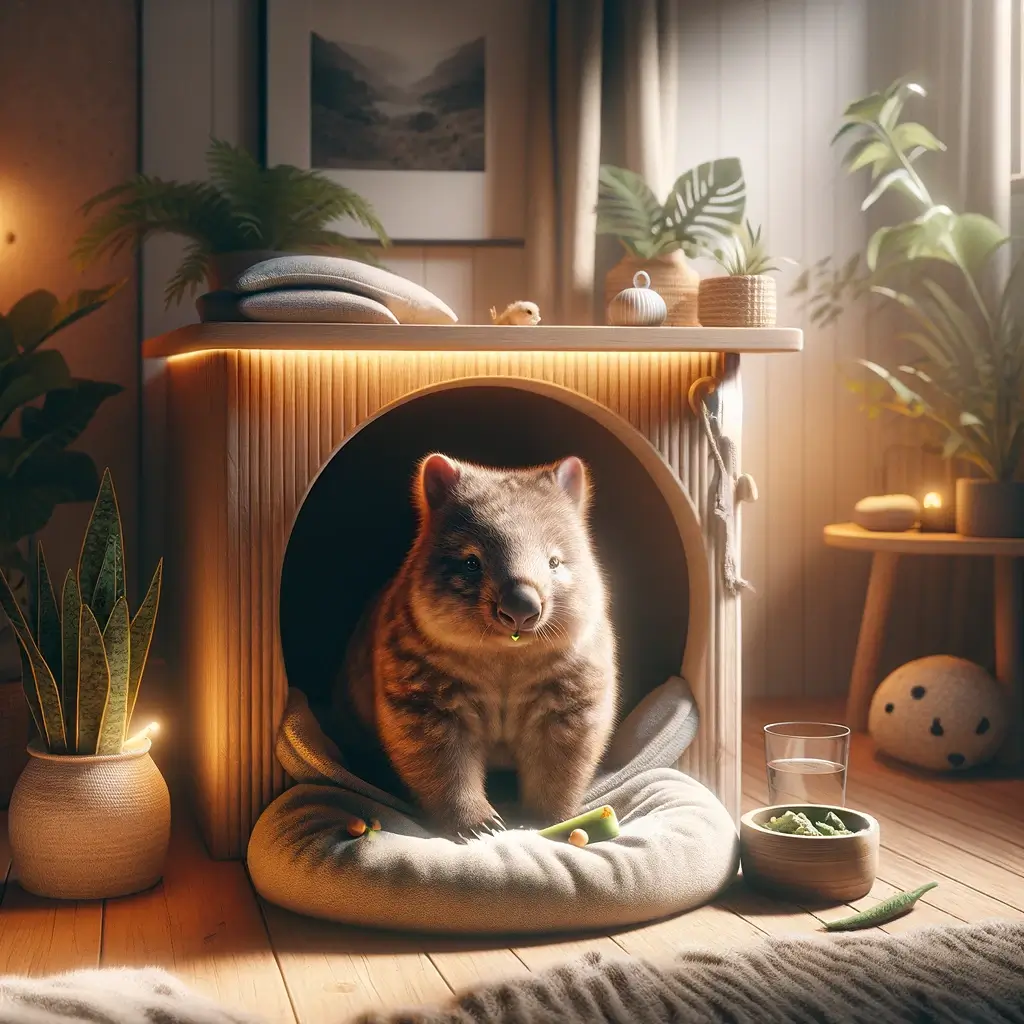
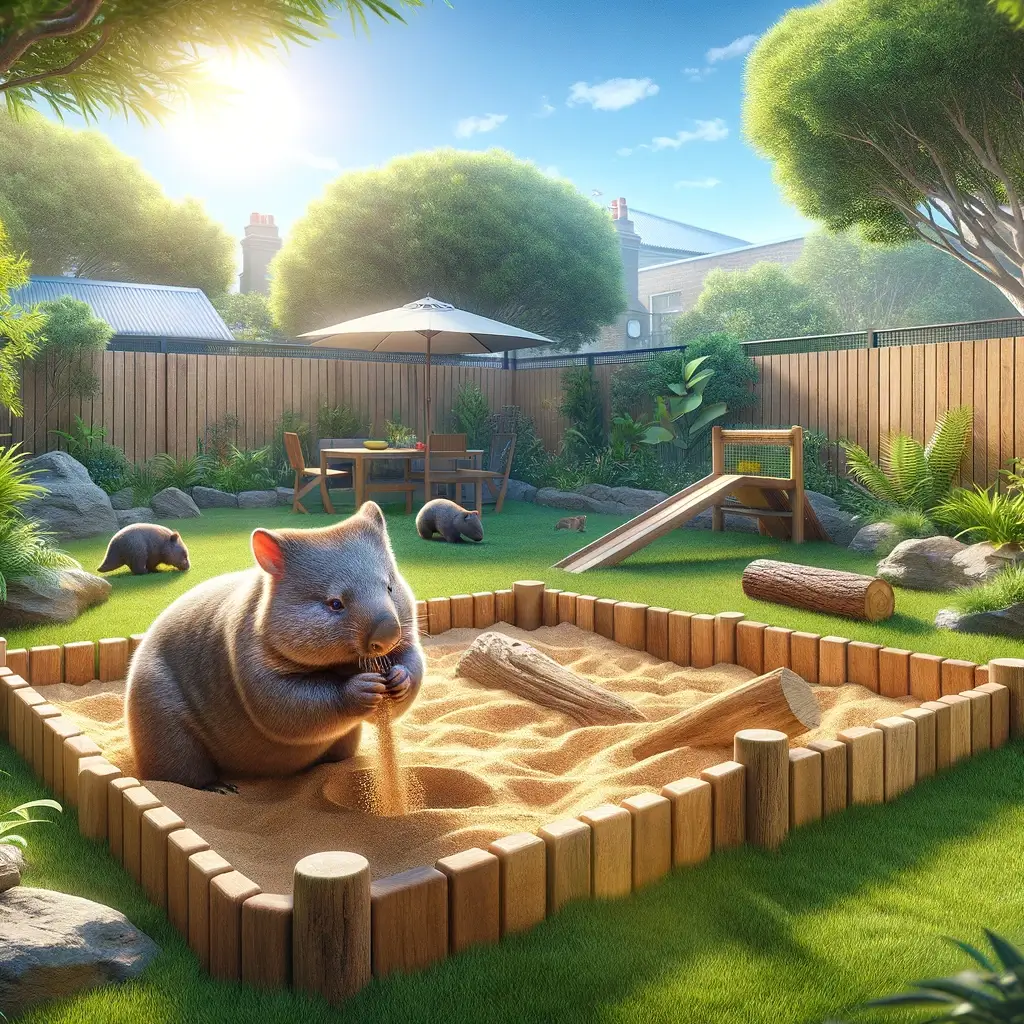
Ideal Habitat for Your Pet Wombat
Given their unique characteristics and natural behaviors, creating a suitable environment for wombats is key to their wellbeing. Here’s how you can recreate a piece of Australia for your pet wombat at home.
Space Requirements
Wombats are burrowing animals. They require ample space to mimic this natural instinct. A large outdoor enclosure, mimicking their natural habitat, is ideal. This should include areas with soft soil that allows for digging. Remember, wombats can create burrows up to 30 meters long.
Soil and Vegetation
Include native Australian plants in your wombat’s enclosure to mimic their natural diet and provide a familiar environment. Grasses, roots, and bark should form a significant part of their habitat. This not only provides them with natural food sources but also enrichment activities.
Shelter and Safety
Protection from extreme weather and predators is crucial. Ensure the enclosure has a sheltered area where your wombat can retreat. The design should also prevent escape or entry by other animals. High fences that extend underground can prevent wombats from digging their way out.
Water Access
Continuous access to fresh water is vital. Position water sources within reach and in multiple locations to encourage hydration, especially during hot days.
Environmental Enrichment
Wombats are intelligent and active creatures. Their environment should include elements that stimulate their natural behaviors—digging, foraging, and exploring. Logs, tunnels, and changing landscapes can provide mental and physical stimulation.
Creating a habitat that closely resembles their natural environment supports your wombat’s health and happiness. Consider these tips to offer your pet wombat a comfortable and stimulating home.
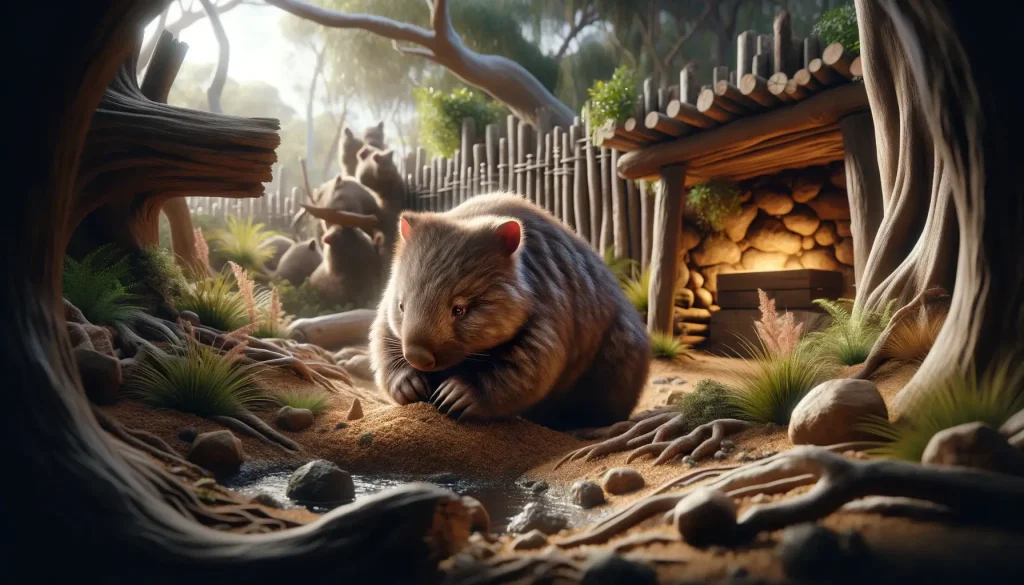
Health and Wellness for Your Wombat
Keeping Your Wombat Healthy and Happy
Ensuring the health and well-being of your pet wombat involves more than just providing a suitable habitat. Like all pets, wombats require regular veterinary care, a balanced diet, and daily interaction to thrive. Here are essential tips to maintain your wombat’s health and happiness.
Regular Veterinary Visits
Wombats, despite their sturdy appearance, are prone to specific health issues that require attention. Regular check-ups with a veterinarian experienced in marsupial care are crucial. These visits can help in early detection and treatment of common wombat ailments such as dental issues, due to their continuously growing teeth, and obesity, a common problem given their low-metabolism diet.
Balanced Diet Management
While wombats in the wild consume a variety of grasses and roots, pet wombats depend on their owners for a balanced diet. It’s vital to replicate their natural diet as closely as possible, which means providing a mix of hay, fresh vegetables, and specialized marsupial pellets. Overfeeding can lead to weight issues, so monitor their food intake carefully.
Exercise and Stimulation
Physical activity is essential for your wombat’s health. Given their natural inclination to burrow and explore, providing a secure outdoor space where they can dig and move around is vital. Incorporating environmental enrichments such as tunnels, logs, and digging pits can also prevent boredom and promote physical health.
Bonding and Social Interaction
Although wombats are not traditionally as sociable as dogs or cats, they can form strong bonds with their caretakers. Spending time with your wombat, whether through gentle petting, feeding, or simply being present, can enhance their quality of life and reduce stress levels.
Preventing Common Health Issues
Awareness and prevention are key components of pet wombat care. Protecting them from parasites, ensuring they don’t ingest toxic plants, and managing their exposure to extreme temperatures are all critical measures to keep them healthy.
Incorporating these health and wellness practices into your routine ensures your pet wombat not only survives but thrives under your care. Remember, a healthy wombat is a happy wombat, and their well-being is a testament to your dedication and love as a pet owner.
Beginner Guide to Raising Quail at Home
What are the Signs of a Dog Concussion?
What Causes Your Dog’s Ears to Smell Bad?
When your dog’s ears start to emit an unpleasant odor, it might leave you puzzled…
Methimazole Treatment for Cat Hyperthyroidism
Methimazole plays a crucial role in managing feline hyperthyroidism, a condition marked by an overactive…
Got Hummingbirds in your Backyard? Here’s How to Care for Them.
Why Does Your Cat Pee Outside the Litter Box?
Cat’s Litter Box Issues It’s not uncommon for cat owners to face the frustrating dilemma…



